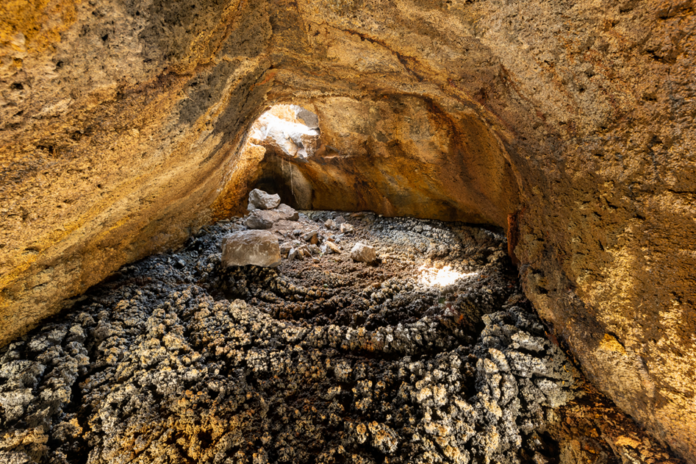Home owners and developers are discovering approximately one new lava cave a month in the Auckland Volcanic Field (AVF), and a new research project aims to create a complete database of historical records and new discoveries.
The project by DEVORA (Determining Volcanic Risk In Auckland), a long-standing research programme funded by Toka Tu Ake EQC and Auckland Council, wants to create a better picture of the lava cave locations, so future developments can happen safely and not damage these special features.
DEVORA researchers engaged Jaxon Ingold from Waipapa Taumata Rau/University of Auckland to identify and collate the existing information of the hundreds of lava caves that exist across the city, and to help develop a system to share that information sensitively with relevant parties.
“Many people know there are lava caves underlying the volcanic parts of Auckland, but the exact information is spread around lots of different groups, like local iwi, the council and experts who have been investigating and mapping some of the network,” Ingold says.
Auckland is built on a large potentially active volcanic field comprising 53 volcanoes and hundreds of lava caves, some of which are up to 290m long. The caves are relatively rare by world standards, and can only be created under very specific circumstances.
“The type of lava and the speed of the flow will determine if the outside layer cools down fast enough to harden. This creates a tunnel for the lava to flow through, and when the lava drains away a cave is left behind,” Ingold says.
He’s been working closely with Auckland Council geoheritage experts Kate Lewis and Christina Bloom, as well as speleologist Peter Crossley.
Natural features specialist Lewis explains the main project goal is to create a database of currently known and newly discovered lava caves that can be used by planners, engineers and relevant people in order to protect them, and to strengthen the understanding of lava caves and lava flows in Tamaki Makaurau.
Newly discovered lava caves are reported to the council, and the team documents these caves and helps find solutions for completing any planned works, while avoiding or minimising further disturbance to the cave.
“We want to encourage Aucklanders to report new caves and share any information we may not have. There are several reasons why this information could be sensitive, so we want to reassure people we will treat that information appropriately,” Lewis says.
Lava caves are also of importance to Maori. Even caves that have never been open to the surface and accessible by humans prior to their discovery may be culturally and spiritually significant.
“Because these sites are incredibly significant for local Maori, we recognise the importance of working closely with local iwi to get a better picture of these sites,” Ingold says.
He adds that some caves are known by iwi, and their location is highly sensitive, so Auckland Council works with mana whenua on how best to protect them.
Chief resilience and research officer Jo Horrocks at Toka Tu Ake EQC says the organisation invests in DEVORA research to better understand all aspects of the Auckland Volcanic Field, including the lava caves.
“This project teaches us important geological and geoheritage lessons, like understanding lava flow patterns or predicting where other caves could be located, which is helpful for anyone involved in planning and building future housing or infrastructure,” Dr Horrocks says.
Lewis explains that due to their cultural, historical and geological significance, many lava caves are scheduled as Outstanding Natural Features.
Under the Auckland Unitary Plan all newly discovered lava caves more than one metre wide need to be investigated and potentially protected, similar to archaeological sites.
“Our team has become extremely responsive to the needs of anyone reporting a new cave during works in order to find options to continue the project,” Lewis says. “However, some modifications to the works methodology and project are typically required.
“We help them develop construction methodologies to reduce vibration and work carefully around the cave, as well as working with geotechnical engineers, where required, to re-design structures over and around caves safely.
“We have worked hard to streamline this process, so works can recommence as quickly as possible while still protecting the cave.”




